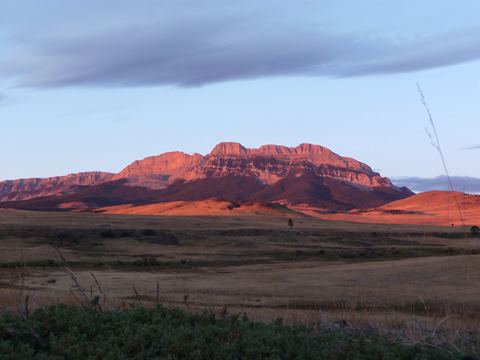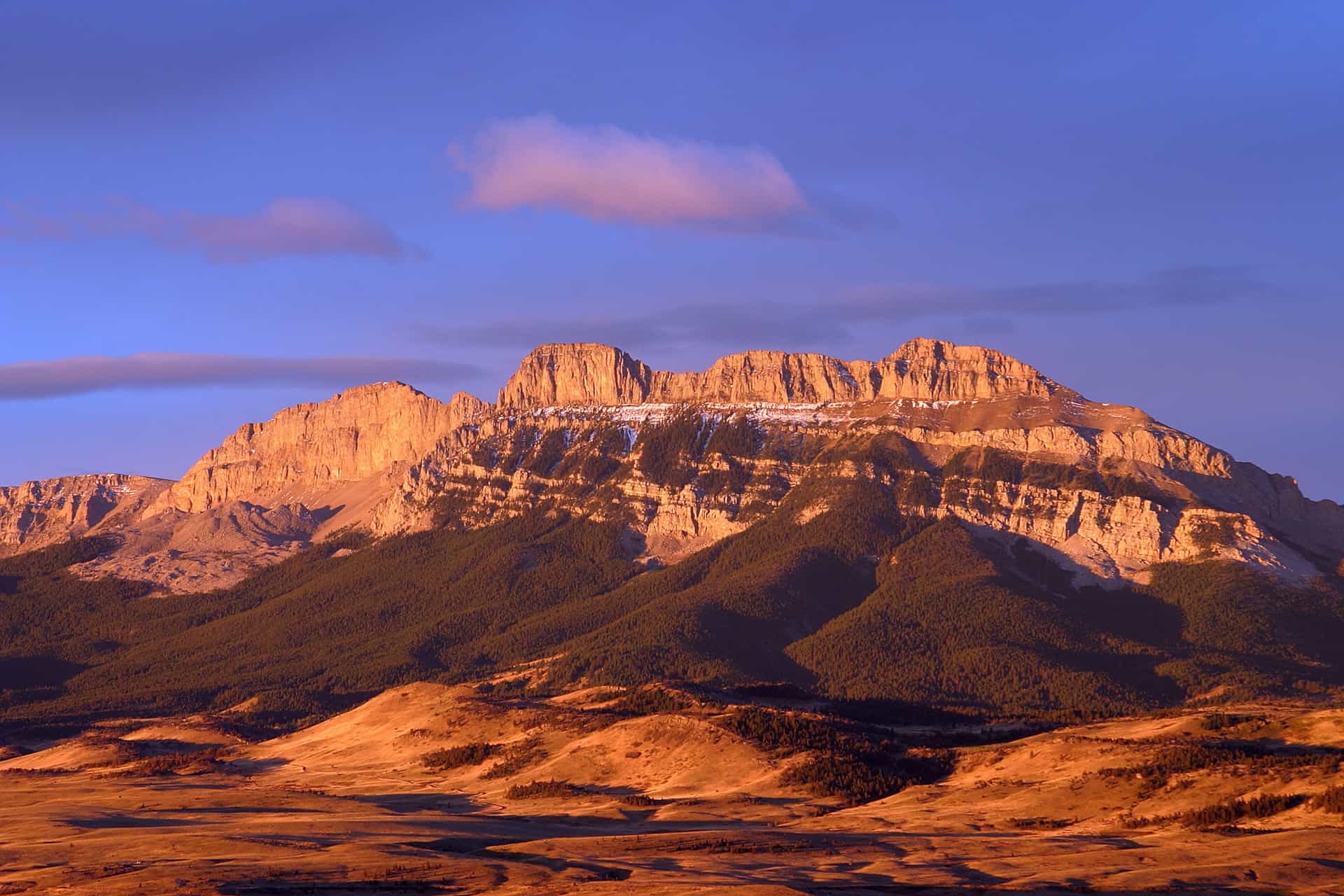In today’s Sunday papers, The Denver Post and the Missoulian had three op-eds and an editorial of relevance to our usual topics. Ski Area Water Rights, 21st century conservation, private lands conservation and Tester’s bill. I lumped them together below and one separate in a separate post (restoration op-ed in the Missoulian), just to reduce my work here. Please feel free to comment on any or all of them.
One thing I thought was interesting was that in the Jon Christenson piece (third below), conservation easements protect the land from development by allowing the lands to be working for grazing, agriculture or timber. On federal lands, though, we were discussing if roadless is not adequately “protected” and only wilderness is really “protected” (albeit not from air pollution or climate change).
The recession presented land trusts with some great opportunities in recent years, as development stalled, and prime lands were available at distress-sale prices. But most of the growth has come through conservation easements, which are becoming ever more popular because they allow land trusts to protect land at an even lower price. “You pay 40 to 50 percent of the fee value of the land without any management costs,” explains Nita Vail, executive director of the rancher-led California Rangeland Trust. That’s because the landowners continue to own and manage their lands for grazing, agriculture, or timber.
These “working landscapes” — ranches, farms and timberlands — are now a priority for the majority of land trusts nationwide, according to the Land Trust Alliance survey.
Editorial- Denver Post #1
Editorial: The right to enjoy the land vs. ski resorts’ water rights
As water becomes increasingly scarce, it is important to bring clarity to the issue of who controls this resource at ski areas.
Posted: 01/15/2012 01:00:00 AM MST
By The Denver Post
The intensifying battle between the ski industry and the U.S. Forest Service over water rights is far more complicated and nuanced than it might seem at first glance.
It’s not necessarily a bad thing that the matter has landed in federal court so a judge can parse through the issues and apply the law fairly.
At the end of the day, we hope the rights of citizens to enjoy recreational opportunities on federal land are appropriately balanced against the financial interests of ski resorts.
We’ve heard a lot about ski industry contentions that new rules by the government amount to a “taking” of water rights they spent millions to acquire. The industry makes a compelling case.
Yet it’s important to keep in mind the government’s argument. The Forest Service says it is proposing regulations that clarify a 2004 change to ski permit conditions made during the Bush administration.
The government’s position is that water rights associated with ski areas should remain with the government even if the ownership of a resort or its business plans change.
An important point of disagreement between the ski areas and the government is this: Federal authorities contend the water rights at issue involve water that originates on federal land and didn’t have to be bought by the resorts. This rule doesn’t, they say, have anything to do with private rights bought by resorts.
That is to say, water from federal land that is permitted for use in snowmaking ought to remain with the property even if a ski resort were to be sold.
The National Ski Areas Association sees the water rights issue in a different light — one they construe as an effort to confiscate private property.
In a lawsuit filed last week in federal court, the industry group says the government is seeking control over water rights that ski areas obtain “from private lands or lands miles away from the ski area.”
These are vastly different interpretations of the proposed permit language that need to be resolved.
The federal courts are well-equipped to pull apart the complexities of water law and rule-making procedure. However, a better outcome would be a settlement.
We hope the parties can agree on a resolution of their differences over ski permit language without a protracted and costly legal battle.
Homes and businesses have sprouted up around ski runs built on federal land and people have come to expect access to these areas for alpine recreation. Those towns could be decimated by a decision that could allow water to be siphoned off for other uses.
As water becomes increasingly scarce, it is important to bring clarity to the issue of who controls this valuable resource at ski areas.
It would be a travesty if the future of the recreation that has so come to define Colorado were undercut by an unjust policy.
In my opinion, this lays out some of the basic principles and echoes my frequently stated “is litigation the best path?” question.
These two are about 21st century conservation (creativity needed!) on public and private lands:
Op-ed Denver Post #2
Guest Commentary: Conservation for today, and tomorrow
Posted: 01/15/2012 01:00:00 AM MST
By Tim Sullivan
The start of a new year is a natural time to turn our thoughts to the future. However, for the conservation organizations, local governments and state agencies protecting Colorado’s most special natural resources, thinking about tomorrow is already ingrained in everything we do. Every project we undertake must not only have a tangible result today, but provide benefits to Coloradans far into the future.
This past year, we continued to find a balance between meeting people’s immediate needs and ensuring nature continues to benefit us all in the long run. The state of the economy, increasing population, demands for water and energy, and a changing climate will be among the many complicated factors we need to consider as we look ahead. To solve these issues, innovation will be crucial.
One example of conservation work paying benefits long into the future is the restoration of unhealthy forests. There is no short-term fix, but it’s a problem we must address or future generations will face more severe fires, insect and disease outbreaks, and threats to our homes and water supplies that we simply cannot afford. This summer will mark a decade since the massive Hayman Fire. When it comes to preventing the next mega-fire, an ounce of prevention is truly worth a pound of cure. Colorado hosts a number of promising collaborative efforts between citizens, conservation groups, local governments and the U.S. Forest Service. These efforts help set priorities and resolve potential conflicts, allowing critical forest restoration work to proceed today, with benefits to be realized for years to come.
While Colorado is best known for our forests and mountains, the grasslands covering the eastern part of the state are a remarkable piece of our heritage. This rolling prairie landscape is home to many longtime ranching families, provides food for our urban populations, and sustains globally significant wildlife.
A mix of economic realities can make it difficult for land to be shared or handed down to sons and daughters who want to carry on the tradition. This year, a remarkable partnership helped address this issue while permanently protecting vital grassland habitat.
When a large ranch east of Colorado Springs went on the market, several families holding adjacent property expressed interest. However, the cost made it impossible for just one family to purchase. Using conservation easements and monies from the lottery-funded Great Outdoors Colorado, an innovative financial model was born where the land was purchased and split between four families. The result was a win-win for wildlife and the local ranching community.
While it may seem natural for ranchers to pass on their conservation ethic to the next generation, children living in urban areas often have limited opportunities to connect to the natural world. Creating connections between youth, wherever they live, and the natural world is essential to the future of our state.
Environmental education, volunteer opportunities and youth internships with conservation organizations will serve as the catalyst to engage a future cadre of environmental leaders.
We still face many challenges to ensure our children, and theirs after them, will experience the same wonders we enjoy — the iconic places, amazing wildlife and abundant resources of Colorado. I believe we are up to the challenge and together can create a future where the lands and waters on which all life depends are protected.
Tim Sullivan is state director of The Nature Conservancy in Colorado.
This one’s also from High Country News
Op-ed Denver Post #3
opinion
Recession is aiding the conservation of Western lands
Posted: 01/15/2012 01:00:00 AM MST
By Jon Christensen
High Country News
The Great Recession, it turns out, may have been good for one thing in the West: private land conservation. From the tiny Orient Land Trust in Colorado’s San Luis Valley, which has nearly doubled its holdings to 2,260 acres, to the 138,041 acres of ranchland protected by the California Rangeland Trust over the last five years, statewide and local land trusts in the West have done better than ever recently, even as many environmental advocacy groups continue to trim budgets and federal funding for conservation falters.
The federal Land and Water Conservation Fund, which agencies rely on to acquire valuable private lands, suffered a 38 percent cut and protected just over 500,000 acres over the last five years. During the same period, private nonprofit land trusts protected 20 times as much undeveloped land — 10 million acres nationwide, according to data in a new census of 1,700 land trusts in the national Land Trust Alliance.
Land trusts also grew in other ways, including a 19 percent increase in paid employees and contractors, a 36 percent increase in operating budgets, a 70 percent increase in volunteer numbers, and a near tripling of long-term endowments.
Land trusts protect land by either buying it outright or paying for a conservation easement, which restricts or removes the landowner’s right to develop open land. Landowners can also donate property and easements and then receive a break on their income taxes from the federal government and some state governments. The latest gains bring the total area protected by the nation’s land trusts to 47 million acres — more than twice the area covered by all of the national parks in the lower 48 states.
In fact, private land conservation is now shaping the future of much of the West as decisively as development. Land that is protected by conservation easements or bought by land trusts is legally required to be protected in perpetuity. And in recent years, local land trusts have been “saving more land than is lost to development,” says Rand Wentworth, president of the Washington, D.C.- based Land Trust Alliance. That pattern was apparent in the alliance’s last census five years ago, when new conservation barely edged out new development nationwide and in the West. It became much more dramatic during the recession, as new housing construction crashed and conservation efforts in most states continued to grow.
This trend is particularly strong in the Western states, where statewide and local land trusts conserved 2.6 million acres between 2005 and 2010, 30 percent more than they did from 2000 to 2005. These trends put California, Colorado and Montana among the top five states nationwide in total private land conserved. Arizona, Nevada and Wyoming made large gains compared to the previous period. And in Colorado, Montana and Wyoming, so much more rural land is now being conserved than is being developed that it seems that much of their open land will likely remain undeveloped.
The recession presented land trusts with some great opportunities in recent years, as development stalled, and prime lands were available at distress-sale prices. But most of the growth has come through conservation easements, which are becoming ever more popular because they allow land trusts to protect land at an even lower price. “You pay 40 to 50 percent of the fee value of the land without any management costs,” explains Nita Vail, executive director of the rancher-led California Rangeland Trust. That’s because the landowners continue to own and manage their lands for grazing, agriculture, or timber.
These “working landscapes” — ranches, farms and timberlands — are now a priority for the majority of land trusts nationwide, according to the Land Trust Alliance survey.
Whether the blazing growth of private conservation in the West will continue unabated is unclear, though. The recession may yet have lagging effects. Like her colleagues around the country, Vail worries about the loss of generous tax incentives for conservation easement donations, which are set to expire at the end of the year unless Congress acts to renew them.
Jon Christensen is executive director of the Bill Lane Center for the American West at Stanford University and wrote this for High Country News (hcn.org, where a longer version can be found). Also contributing were Jenny Rempel and Judee Burr, researchers at the center.
Finally this editorial from the Missoulian on the Tester bill.
Editorial Missoulian #4
Middle ground on forest bill
Posted: Sunday, January 15, 2012 8:00 am
It’s the beginning of a big election year, and the national spotlight is already shining on one of Montana’s U.S. Senate seats. Will Democratic incumbent Sen. Jon Tester be ousted by Republican Rep. Denny Rehberg? We’ll find out in November.
In the meantime, many Montanans are justifiably concerned that the next 10 months will be hopelessly politicized, with two of the state’s three congressional delegates tied up in campaign-caused gridlock.
In meetings with the Missoulian editorial board earlier this month, both Rehberg and Tester provided assurances that they will not allow that to happen. Both candidates pledged to remain focused on their jobs in Congress. And both declared that no amount of campaign politics would prevent them from working together to do what’s right for Montana.
In fact, during his meeting with the Missoulian, Rehberg mapped out a road to compromise with Tester on one of their biggest sticking points: the Forest Jobs and Recreation Act.
Tester first introduced the act in July 2009 at the urging of a diverse coalition of timber interests and environmental groups, and has made several running attempts to push the bill forward in Congress. The bill, which links aspects of the Beaverhead-Deerlodge Partnership, the Blackfoot-Clearwater Stewardship Project and the Three Rivers Challenge, is aimed at both designating new wilderness in Montana and setting logging mandates for the U.S. Forest Service.
Both Tester, a first-term senator, and Rehberg, a four-term congressman, have held multiple public meetings in communities across Montana to gather opinions on the proposal.
Those meetings resulted in several ideas that could be – and should be – used to improve the bill, Rehberg explained. One of them, he said, is the phase-in proposal he first began advocating for nearly a year ago. That measure would require that a treatment threshold for a set number of forest acres – say, 10 percent of the total outlined in the bill – be achieved before new wilderness and recreation areas could be designated.
Requiring logging or thinning triggers to be met before releasing new wilderness would help ensure that the bill actually does what it is aimed at doing – creating jobs, Rehberg said. As it stands, “there’s no such thing as a mandate for jobs in that bill,” he told the Missoulian.
While Tester has not been receptive to the phase-in suggestion – his spokesman has said previously that it would have no chance of gaining congressional approval – Rehberg invited Tester to take a second look at including the phase-in, and offered that he could “work with (Tester’s) bill if he can get something through the Senate and I can have this phase-in.”
Jobs are certainly a top priority in the nation and in Montana right now. Western Montana’s economy could use the boost this act would provide. While eastern Montana has been buoyed by the ongoing oil boom, western Montana has watched one mill after another shutter – including two in Missoula that once employed hundreds of workers.
We hold no illusions that incorporating a phase-in plan will resolve every one of Rehberg’s concerns with the Forest Jobs and Recreation Act. But it’s a place to start – a hand reached across the aisle at a time when Montanans desperately need our elected officials to pass legislation that provides real economic progress.
From the beginning, the proposals that ultimately became the Forest Jobs and Recreation Act were marked by compromise. They brought people with very different and often opposing interests to the same table to reach an agreement on what’s best for all.
It would be wonderful, and a wonderful reflection on Montana, if our junior senator and sole congressman were able to bring this same spirit of cooperation to Congress.
EDITORIAL BOARD: Publisher Jim McGowan, Editor Sherry Devlin, Opinion Editor Tyler Christensen




